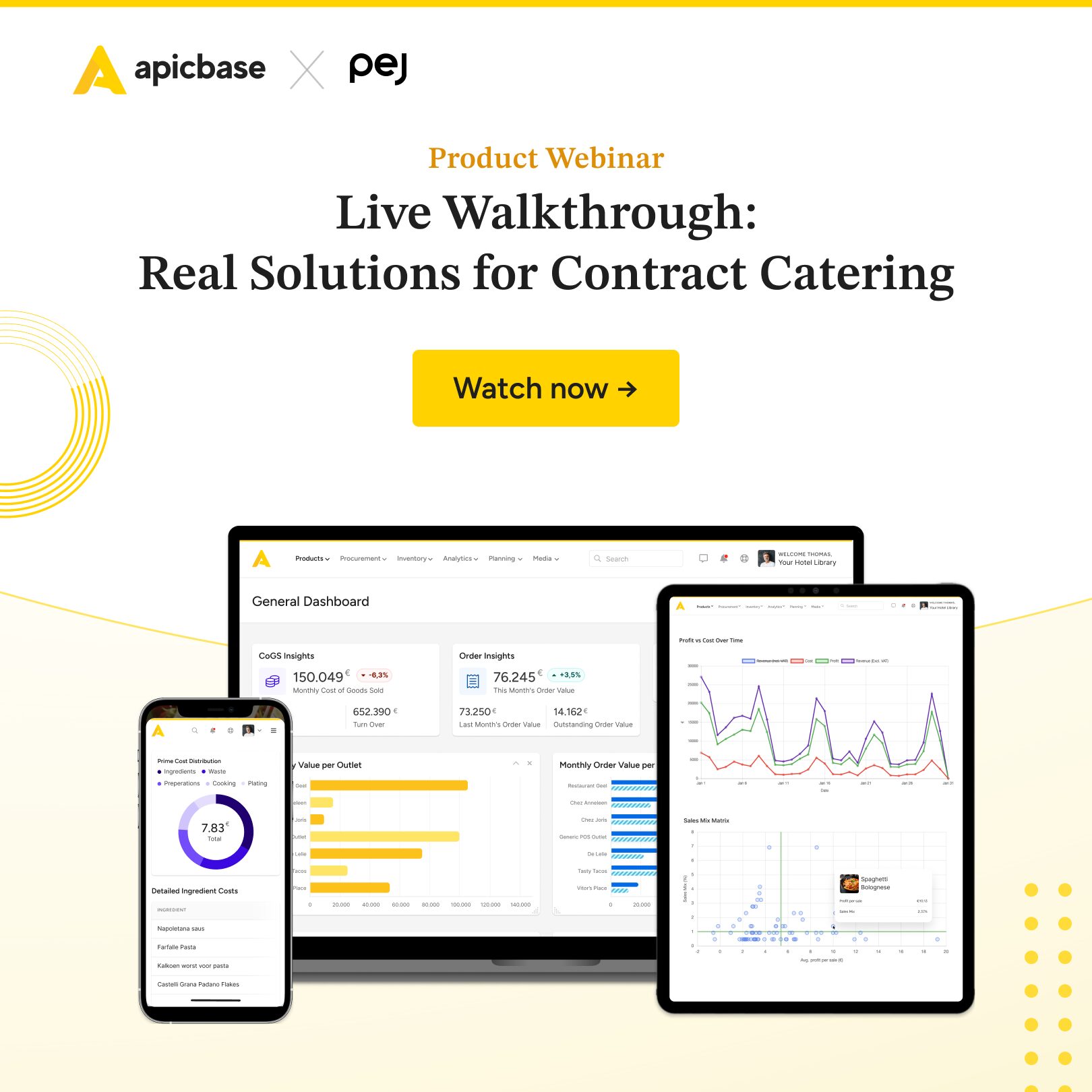Some restaurants immediately thrive in a new location, while others can barely keep their heads above water.
At first glance, they look equally good: the food is excellent, the staff friendly, the price right and everything well organised. But while one attracts a large crowd, the other seems to have more staff than guests.
If you look under the bonnet, you will see that struggling businesses often lack a clear restaurant marketing plan.
Of course, marketing isn’t the only thing that makes or breaks a business, but it does give you an edge when you expand and open in new locations.
Okay, stop right there, if you’ve started googling for a restaurant marketing agency.
You don’t need a fancy consultant to do your marketing. You can do most, if not all, in-house.
In this article, you’ll find restaurant marketing tips for restaurant owners with examples to flesh out your strategy and set up a solid plan for execution.
We’ll show you how to cover more ground with the marketing for your restaurants without making things overly complicated.
Restaurant marketing guide table of contents
- How to sharpen your restaurant marketing strategy
- How to make your restaurant marketing plan
- How to develop massively popular menus
- 3 extra restaurant marketing tips [that will give you peace of mind]
How To Sharpen Your Restaurant Marketing Strategy
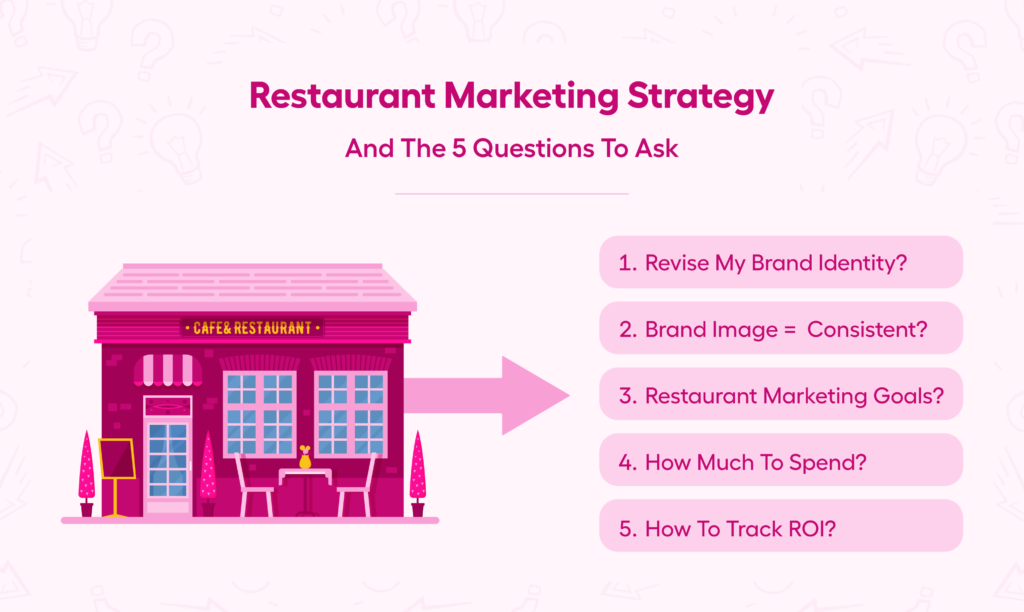
When you’re a local eatery with a long-standing presence in the area, you can get away with social media and a couple of good reviews.
But if you’re looking to expand to new areas and grow your restaurant business, you will have to do more. AND you’ll have to do it in a consistent, and organized way.
That’s where a marketing strategy comes into play.
What is a restaurant marketing strategy?
In a nutshell, the strategy defines, on a company level, who you are, where you want to go, and what to expect from the journey. How you answer these questions will determine the implementation of your restaurant marketing plan.
Question #1:
Do you need to revise your brand identity?
Your brand identity defines who you are. It consists of mainly two things: what you do (your mission statement), and for who you do it for (your ideal customer).
If you’ve been in the business for some time, you probably know the answer to both questions. Yet it’s worth spending some time revising them. Is your brand identity clear enough? Has it changed since you started?
By the way, a common mistake made by restaurant owners is to think that a mission statement has to be sophisticated or lofty.
It doesn’t.
It’s essential that your restaurant mission statement is crystal clear and instantly recognizable to the type of customers you want to attract. For example, here’s what Belgian multi-unit restaurant Mister Spaghetti’s says:
“We have one mission and that is for spaghetti lovers to enjoy our wide and varied range of high-quality spaghetti dishes in a warm, relaxed, friendly atmosphere.”
Quick tip
How to know if you’re targeting the right people (for example, busy professionals, families, or a young urban crowd)?
Your first port of call for insights is your POS system.
You can collect data about average spending, number of covers per table, most popular dining times, etc. And secondly, talk with your front-of-house staff. Ask them about their experiences with customers.
Recommended Read: Restaurant POS Systems For Multi-Unit Operations | How to set up your tech ecosystem for rapid growth
Question #2:
Is your brand image consistent with your identity?
Once you nailed down your brand identity, it’s important to make it shine both online and offline.
Even before potential customers try your food, they should get a feel for the kind of dining experience you offer by just walking past your restaurant or glancing at your website.
Your online presence, furniture, logo, menu: every aspect should be consistent with your restaurant identity. If you discover that the brand image should be optimised, you’ll need to factor a rehaul into your marketing budget.
Question #3:
What are your restaurant marketing goals?
You will need to set objectives for each part of your marketing plan. If you do not, you will never know whether your efforts and investments make a difference.
Having said this, it can be difficult to attribute marketing activities to sales targets, as there are many factors to consider, but at a general level, marketing targets may include increasing brand awareness, attracting a new type of customer, or increasing repeat sales.
Whatever your goals may be, you will have to make them specific. The acronym SMART is a useful one to remember.
Examples of SMART restaurant marketing goals
- Specific: “increasing sales and social media followers as much as possible” is too generic. Increasing them by X% is specific.
- Measurable: there’s no point in setting a goal if you cannot know whether you have achieved it or not. Don’t use a ‘customer satisfaction score’ if you have no way to collect data to measure it.
- Achievable: goals don’t have to be too easy but should not be impossible either. Shooting for the moon to land on the stars won’t work.
- Relevant: you don’t want to waste time and energy chasing any metric under the sun. Facebook or Instagram likes, for example, are a good indicator of what type of content works, but are probably not relevant for your business goals.
- Time-bound: restaurant marketing plans don’t go on indefinitely but have a duration. After that, you assess, correct the course and start again.
Question #4:
How much should a restaurant spend on marketing?
The restaurant marketing examples we describe below are simple and actionable and, in most cases, low-cost. However, there’s no such thing as free marketing even when you rely exclusively on ‘free’ tools like social media.
This means you need to set a budget, depending on the type of restaurant, your goals, the competition and how much you’re comfortable with. The most quoted range is between 3% and 6% of your turnover.
This is confirmed by Mister Spaghetti’s CEO Veerle Jacobs, who actually recommends sticking to the lower end of the range:
“3% seems realistic to me when it comes to the marketing spend for restaurant groups. Individual restaurants will probably spend less. 6% seems very high.”
At 10%, virtual brand operator Rens Bekkers of Bright Kitchen puts his marketing budget a lot higher, “but”, he says, “this includes promotional discounts.”
Some operators would book these discounts as a cost of sales. It proves once again that determining a budget that works for you depends very much on the approach you take. There is no golden rule.
Question #5:
How to track your restaurant marketing ROI?
When it comes to measuring the return on investment (ROI) of your marketing, you can focus on specific marketing campaigns or the overall investment.
The most straightforward ROI formula for marketing in a restaurant is: gross profit/cost of investment.
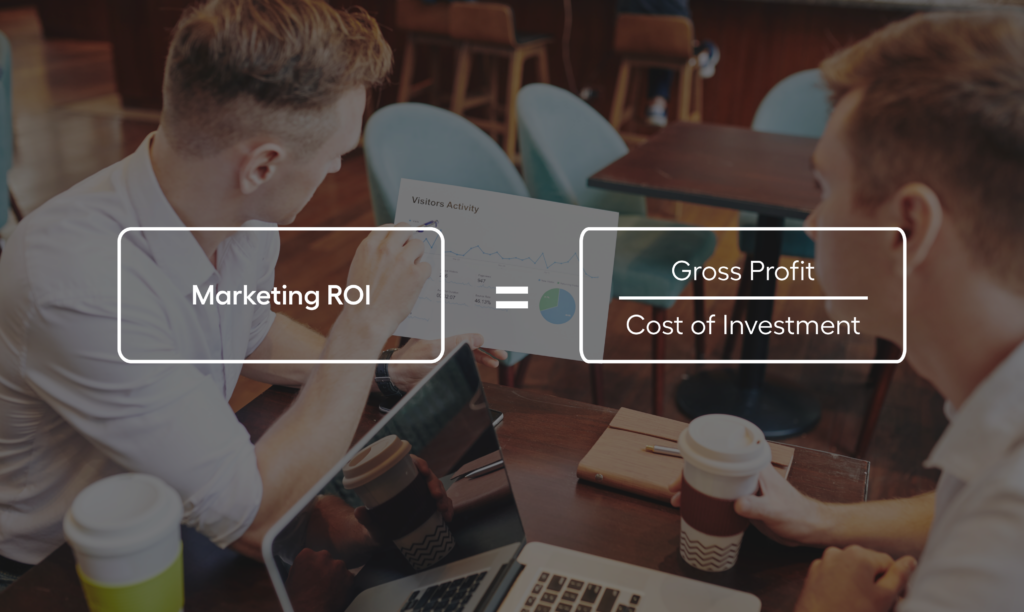
Where gross profit equals sales minus COGS (Costs of Goods Sold) and the cost of investment will include marketing operations expenses such as tools, ads, materials, but also discounts, and time.
In general, the result of the formula should be >1. That’s because you want every Euro you spend on marketing to return more than one in gross profit.
Example
If you spent 500 Euros for a mid-week discount campaign that brought €2,300 in gross profit, it means every Euro you invested generated 4.6.
An even more accurate way to calculate restaurant marketing ROI is to take your baseline into account, meaning how much extra revenue a campaign generates compared to the revenue you would get by doing nothing.
Using the same example as above, let’s suppose that on a typical Wednesday, without any promotion, your gross profit is €1,500.
The ROI in this case would be: (€2,300 – €1,500) / €500 = €1,6.
Calculating ROI is never an exact science, but it does give a restaurant owner a better idea of the performance of a specific promotion. From there, you can compare how different promotions performed, or the same promotion over time.
Keep in mind that the effects of marketing often only reveal themselves after some time. Especially marketing projects geared towards restaurant branding. Consistency is key. Sometimes you just have to keep going, even when there seems to be no immediate ROI.
A 3-Part Restaurant Marketing Plan

A restaurant marketing plan helps you create a coordinated effort between different channels and tactics, to develop the three main stages of a restaurant customer journey: attracting new diners, creating a great dining experience for them, and making them come back for more.
That is why this 3-part marketing plan is 100% focused on the customers of your restaurants and their journey i.e. finding them, feeding them and delighting them.
1. Find and attract new customers
The number one goal of any marketing plan for restaurants is to attract both new and returning customers. Restaurant owners spend much attention on social media, as they should, but I would like to make a plea for the corporate website.
Optimize your restaurant’s website
Your website serves many purposes and it needs to check all the boxes.
Here are five must-haves:
- The top search queries on Google related to your restaurant brand name are most likely the address, contact information and opening hours. Don’t hide them in a subfolder but make them easy to find.
- When people navigate to your website they probably intend to order or make a reservation. Don’t make them look for ways to give you money. Make the sales channels and reservation option immediately available when a visitor lands on your website. Buying from you should be the easiest thing they have ever done.
- The number one asset of your F&B business is the menu. Make sure it’s available on the website, including the current prices. Customers will do their homework before deciding where to eat. They’ll research their options and look up menus of restaurants near them. If the only place where they can glance at your menu is your restaurant, chances are they won’t bother going at all.
- Make sure your website has a consistent look that aligns with the brand image and identity. Consider your website a virtual version of your brick-and-mortar restaurants, so the look and feel must be consistent with your corporate branding.
- Optimize for search engines: the restaurant industry is crowded, not only in real life but online too. Although you may not reasonably expect to rank #1 for ‘best restaurant in [your city]’. That is too broad a search query to tackle. You should, however, aim to show up on top of organic search results at least for your own brand name (which should be easy) but also for your category, target audience and/or speciality.
Example
- “Best Japanese restaurant in Birmingham”;
- “Cosy hamburger restaurant for large groups”;
If you incorporate specific longtail keywords in the copy of your website, people looking for these terms are likely to end up on your website.
Keep Google Business updated
No matter how optimized your website is, for almost any restaurant-related search, Google Business will show up at the top of search results. If you use a set-and-forget approach, you’re missing out on its potential.
Google Business is something between a business listing, a social media channel, and an online ordering platform, which means you’ll need to take care of all three aspects, not just updating basic business details, but also posting pictures and updates, and replying to online reviews.
An active base of followers on social media will help you to create a buzz when you’re expanding to new areas.
Get the most out of social media
Having social media followers is particularly important to create interest and buzz when you’re expanding to a new area.
In your restaurant marketing plan, you should specify which social media channels you want to be active on.
Facebook and Instagram are the bare minima these days. However, depending on your brand and budget, you may want to add other platforms, such as Twitter, Tik Tok, Pinterest, or YouTube.
Describing a social media strategy for restaurants could easily fill a book on its own, so I’ll just mention four basic elements:
- Post high-quality pictures: everyone agrees on this, but not everyone knows how to take great pictures. If you don’t have the right equipment and skills, consider investing in a new camera and a photography course. No need to become a professional, but you’ll want to rise above the level of badly lit on-the-fly smartphone pics.
- Go beyond food: your restaurant brand is more than food. It’s also the personality of your staff, the energy of your customers, and the general vibe of the environment. Your social media activity should capture all of that. A little transparency goes a long way.
- Use the right hashtags: use a tool like Ritetag to use hashtags strategically to be discovered, without stuffing your posts.
- Engage with followers: don’t use social media as just a shop window. Reply to the comments of your followers and proactively comment on their posts too. Disclaimer: Customers will use your social media as a customer service channel, whether you like it or not, so you better embrace it. And yes, you will have to deal with negative comments as well. So it never hurts to brush up on your skills for dealing with negative feedback on social media.
Reply to online reviews
Online reviews are a blessing and a curse for restaurants. Although you have no control over what customers say about you, you can show that you take their opinions seriously, by replying to all of them, especially the not-so-good and the bad ones.
Consider using reservation platforms
Reservation engines like OpenTable or The Fork can drive a lot of bookings to your restaurant. They’re not free though, so you’ll need to carefully consider the ROI before signing up for them.
Use promotions
Old-school discounts, promotions and early birds still work very well, especially on days or dayparts with low footfall.
Engage with the local community
Unless your brand is 100% virtual, engaging with the local community (where most of your customers come from) is a powerful marketing tool. Authenticity is key though. There are many ways to go about this: volunteering, sponsoring an event, hosting an exhibition or a book presentation of a local artist, to name just a few.
Connect the online and offline world
While you need an online marketing strategy to attract new customers to your restaurant, you can use the offline world to increase your online presence.
Example
You can set up contests to encourage customers to take pictures of food while they are at your restaurants, or to prepare any of your dishes at home and share pictures on social media.
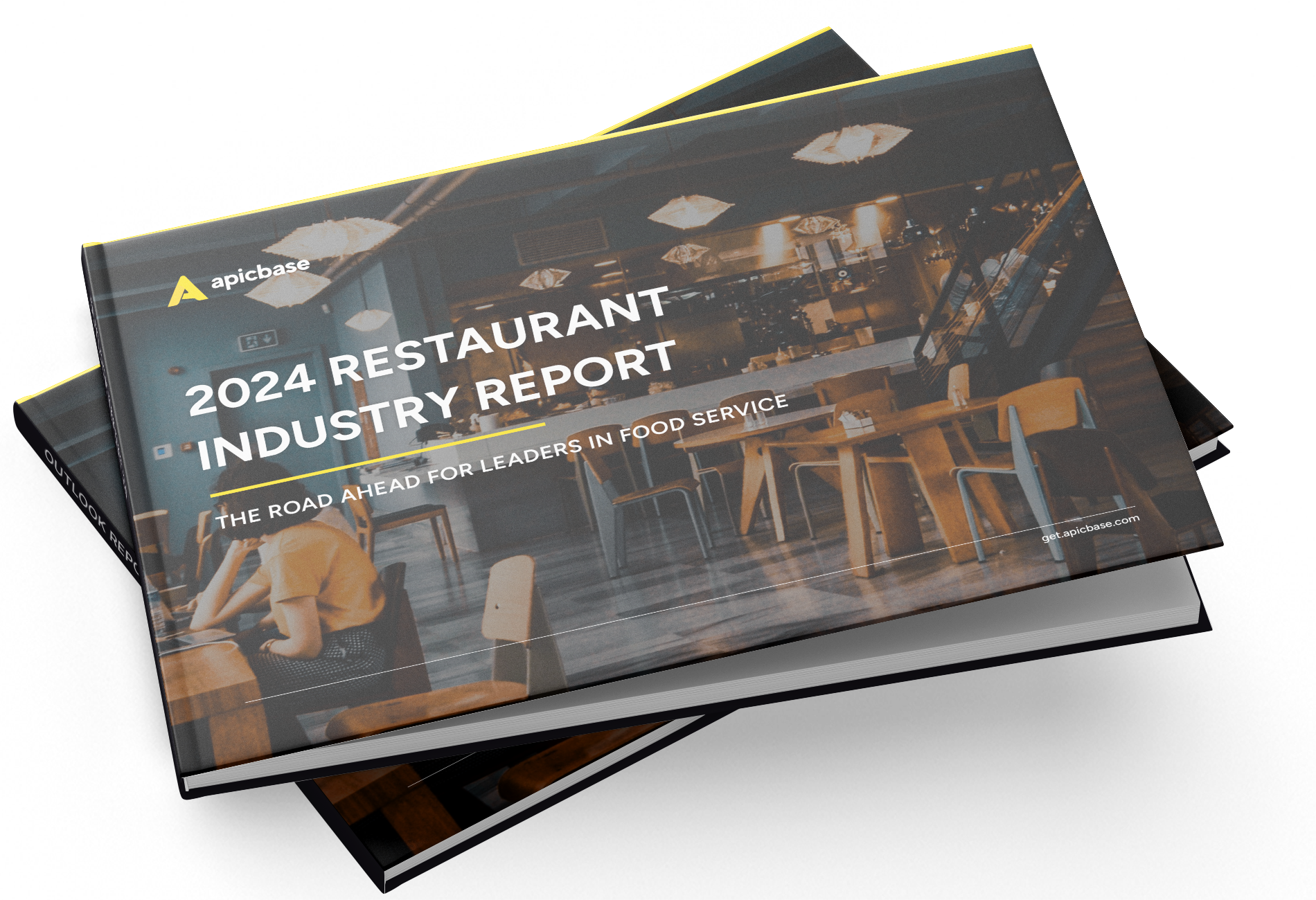

2024 Restaurant Industry Report
Read how successful restaurant leaders are tackling challenges in the foodservice industry.
2. Create an outstanding dining experience
You can’t give marketing tips for restaurant owners without mentioning the dining experience at least once. Marketing isn’t a separate entity of the company but is part of its fabric at every level.
Offer options
Whether your model is dine-in only, delivery only, or both, you should make every step of the dining experience as smooth as possible and offer options and perks. In addition to the menu, give people extra reasons to visit.
Example
Complimentary Wi-Fi, QR codes for ordering and paying, options for booking a table or ordering delivery through your website, Google Business, and social media channels.
Optimize your menu
While your brand image creates the promise of a certain dining experience, your food and ambience must fulfil the promise. Invariably, and despite all your educated guesses, certain dishes will be more successful than others. With menu optimisation, you will know what to keep and what to replace. You want dishes that customers love and come back for but are also profitable for you.
A platform like Apicbase will assist your menu development team by collecting and analyzing the restaurant sales data and food costs.
Use feedback to improve
Marketing is not just about making your restaurant brand visible. There’s a lot of work that happens in the background too.
Menu optimization is a good example. Another one is using feedback – especially the negative kind – to improve food, service, or anything else your customers complain about, whether online or in person.
We are the last ones to say that the customer is always right (especially when they express their grievances on social media), but it is still worth putting your ego aside, switching off emotions and looking at the feedback with some distance.
Often there is gold glinting under the muck.
Example
“I was ready to make a reservation, but after five minutes of searching for the phone number and finally getting connected, I was told to use the online reservation form, which, it turned out, didn’t work.”
3. Keep’m coming back for more
How to increase repeat visits? If the dining experience you create for your customers meets and exceeds expectations, then a good part of the job is already done.
Unfortunately, however, that may not be enough. After all, with so many restaurants to try, why should customers – even the happy ones – come back to yours?
What gives you an advantage is keeping in touch with your customers.
One way to do this is – again – with social media. The same engagement tactics you used to find new customers will work with your existing customers too.
There are two more strategies you should consider:
- email marketing, and
- loyalty programs.
Email marketing for restaurants
It’s been declared dead a million times but email is going strong nonetheless. It is one of the oldest online marketing tools, also in the restaurant industry, and even if it has lost some of its original steam, it is hardly noticeable.
The first step in an email marketing strategy is collecting email addresses. Your online ordering tool is a goldmine here, but there are other useful channels as well, like a subscription box on your website, and even paper forms at the table.
For email marketing to be effective, the list should be organized in a CRM that integrates with your POS system. This way, you understand the food and drink preferences of each guest.
This information is tremendously valuable but also necessary for the second step: segmentation.
Sending the same promotion to your whole list won’t nearly be as useful as sending personalized offers based on individual customer preferences.
Loyalty programs for restaurants
A loyalty program is another retention strategy that’s been around for decades but is still going strong. The main difference between now and then, is that programs are run digitally these days and are often integrated into a restaurant’s tech ecosystem.
There are many apps, third-party solutions, and CRM systems with POS integrations available. Apicbase partners with EasyOrder, Formitable and Smartendr.
Admittedly, these are more advanced and require a slightly higher investment, but could potentially make a huge difference for growing restaurant businesses.
Develop Massively Popular And Hugely Profitable Menus [Using Powerful Data]
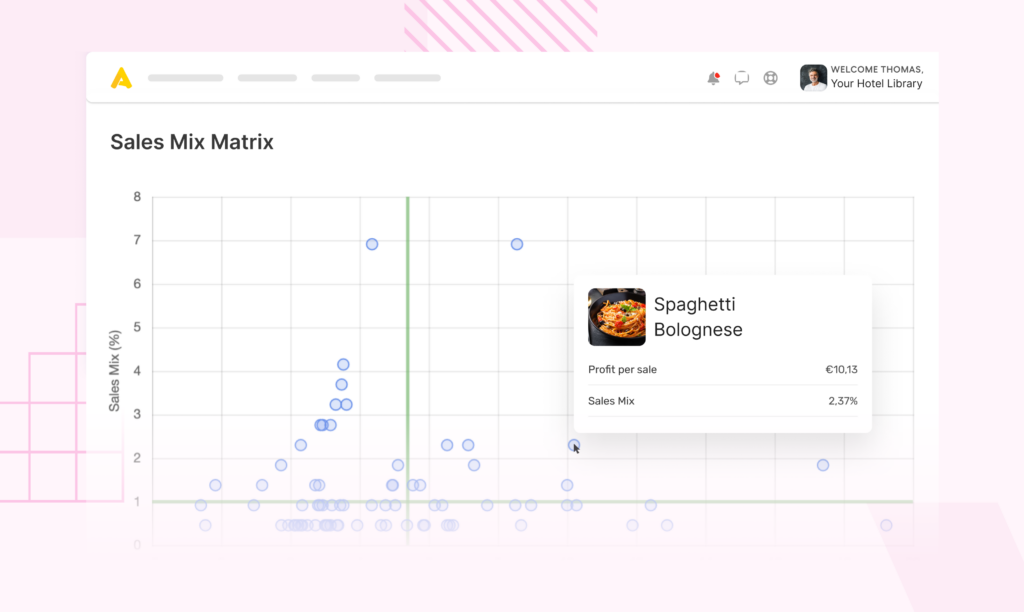
If there is one element of your operation that is a sure-fire way to draw in the crowds: it’s your menu.
Some say it is your most important marketing asset, and we tend to agree. If the offering is inadequate — i.e. it doesn’t appeal to the right audience or doesn’t generate enough margin for the business, you can spend all the money in the world on marketing — the results will be painfully underwhelming.
Luckily the days when your head chef and restaurant operations manager spend long caffeine enhanced nights hunched over data exports from the POS system and food cost spreadsheets are long gone.
With menu engineering software, all there is to do is open your laptop and check the dashboard to understand your menu’s performance.
If you want automatically generated graphs showing which menu items are popular and profitable, get in touch with us.👇

Data-driven Menu Engineering with Apicbase
Apicbase pulls real-time sales data from your POS system and links them to the individual CoGS in a crystal-clear dashboard. You can see at a glance which menu items you need to kill, fix or promote.
See how it works?👇
3 Extra Restaurant Marketing Tips [That Will Give You Peace Of Mind]
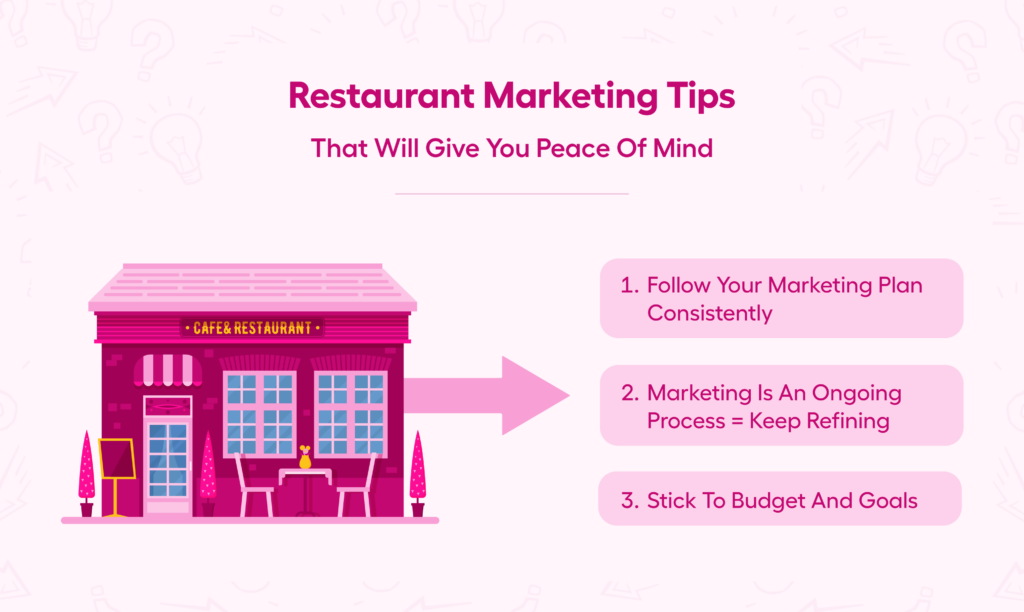
Remember when we said that you don’t need to hire a fancy agency to plan a marketing strategy for your restaurant business?
After reading through the restaurant marketing tips in this article, you’ll be forgiven for thinking we were wrong, because: “No one can execute such a comprehensive restaurant marketing plan on their own, especially me, because I have actual restaurants to run.”
Well, there is truth in that.
Even very basic marketing for restaurants, as described in this post, has many components. In a growing business, it makes sense to install a dedicated team of one or more people to take care of marketing.
But to get to the point where the business is sound enough to hire more people, you will need to use branding, promotion and advertising. In other words, you’ll have to get involved in marketing, even if you don’t have the resources yet to hire a dedicated team.
Don’t feel overwhelmed, though.
Just keep these three tips, or principles, in mind and everything will turn out just fine:
- The best marketing plan is the one you can follow consistently.
- Marketing is an ongoing process: start with the basics, get good at them, and build from there with more sophisticated tactics.
- You may not get goals and budgets right the first time. Stick to it, though, you’ll get better over time.


